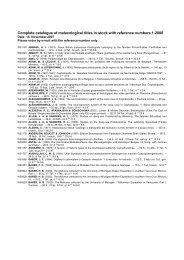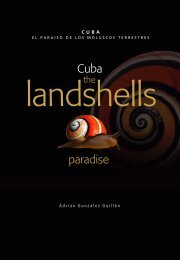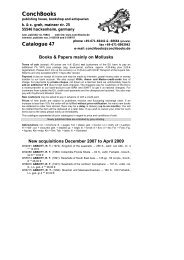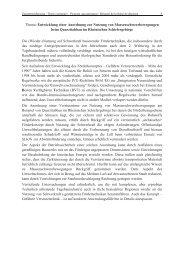Madeira Canary Islands Azores – Fishes Dr. Peter Wirtz
Madeira Canary Islands Azores – Fishes Dr. Peter Wirtz
Madeira Canary Islands Azores – Fishes Dr. Peter Wirtz
You also want an ePaper? Increase the reach of your titles
YUMPU automatically turns print PDFs into web optimized ePapers that Google loves.
As the name implies, this fish has no fins whatsoever and looks more like a worm than a fish. During the day<br />
it is hidden in the sand. At night, the head is looking out of the sandy bottom. Photo insert <strong>Peter</strong> <strong>Wirtz</strong>.<br />
32<br />
Tarpons (Megalopidae)<br />
Tarpon (Megalops atlanticus)<br />
Up to 2.5 m long. <strong>Madeira</strong>, <strong>Canary</strong> <strong>Islands</strong>, <strong>Azores</strong>. 2 <strong>–</strong> 20 m depth.<br />
This tropical species lives on both sides of the Atlantic. It looks like a gigantic herring but is more closely<br />
related to the eels, as shown by a similar larval stage. Near <strong>Madeira</strong>, the <strong>Canary</strong> <strong>Islands</strong> and the <strong>Azores</strong> it can<br />
be seen only very rarely. The tarpon hunts for fish and cephalopods at night. Photo (from Curacao Island)<br />
<strong>Peter</strong> <strong>Wirtz</strong>.<br />
Herring (Clupeidae)<br />
Round sardinella (Sardinella aurita) photo bottom <strong>Peter</strong> <strong>Wirtz</strong><br />
<strong>Madeira</strong> sardinella (Sardinella maderensis) insert <strong>Peter</strong> <strong>Wirtz</strong><br />
Up to 25 cm long. <strong>Madeira</strong>, <strong>Canary</strong> <strong>Islands</strong>, <strong>Azores</strong>. 1 <strong>–</strong> 50 m depth.<br />
The three pilchard species in the area are very difficult to tell apart under water. The <strong>Madeira</strong> sardinella has a<br />
black dot behind the opercle and black tips of the tail fin. The Round sardinella has a black dot behind the<br />
opercle. The third species, the true Pilchard (Sardina pilchardus), does not have a black dot behind the opercle<br />
and is more elongate than the other two species.<br />
34









